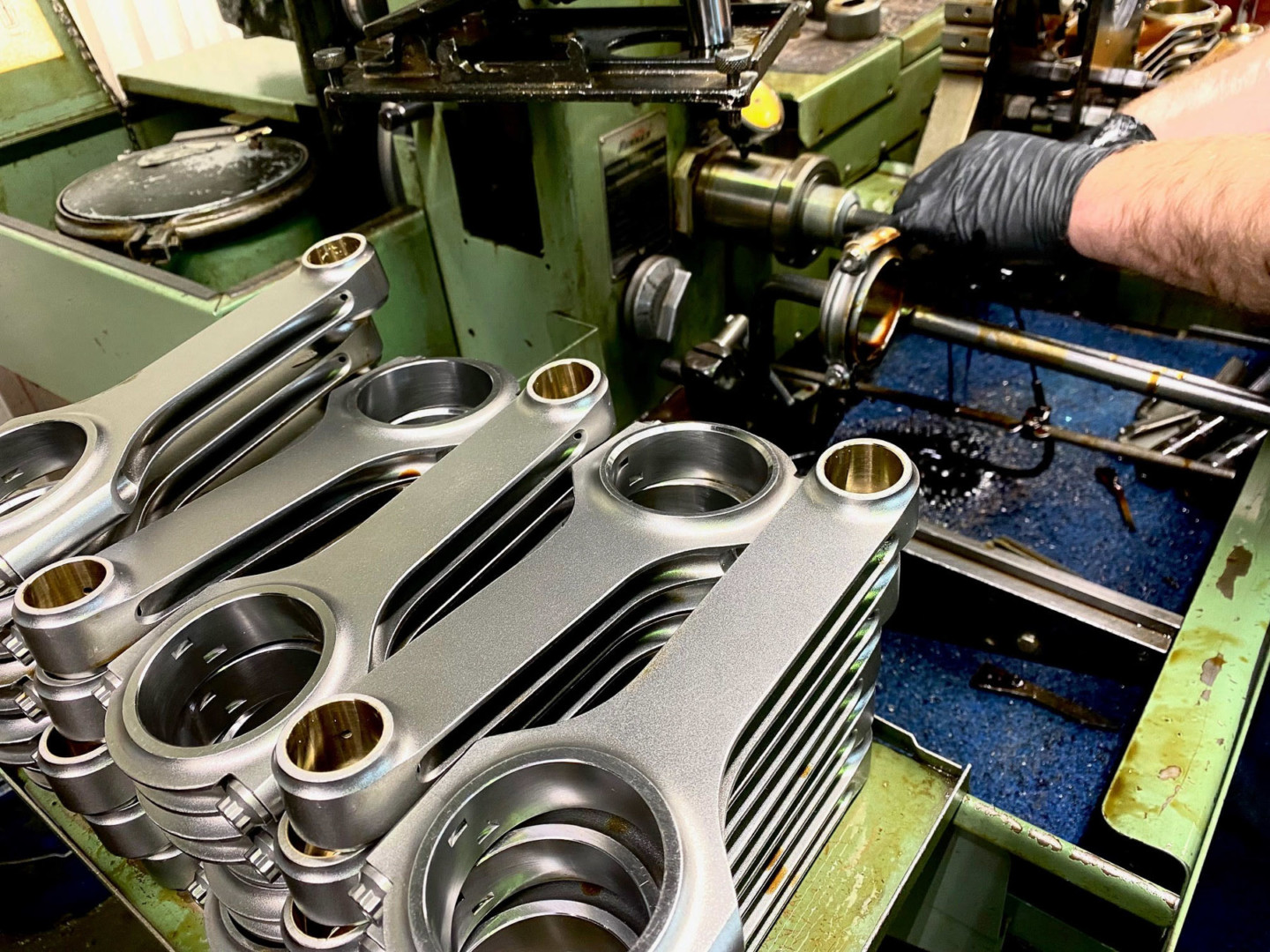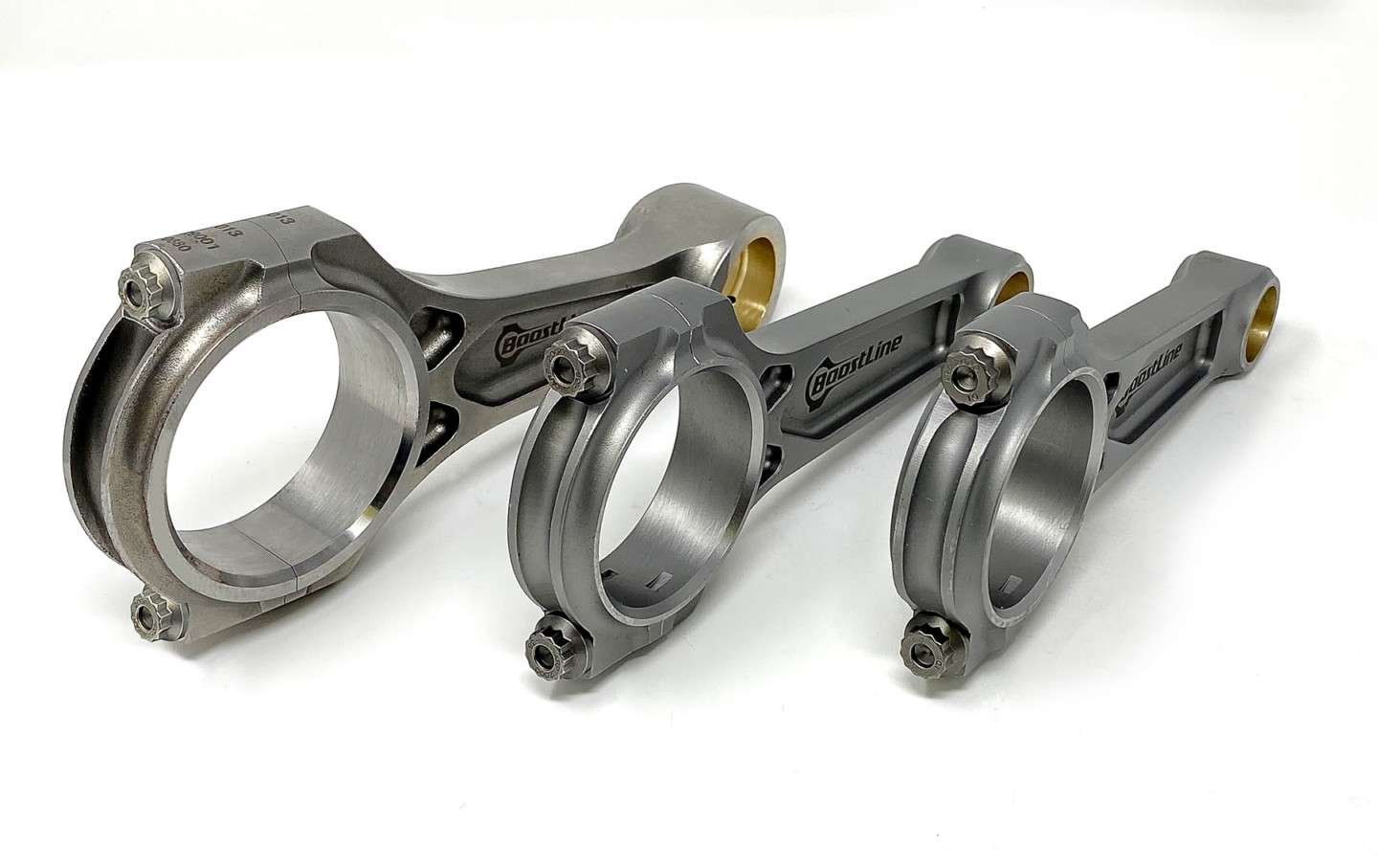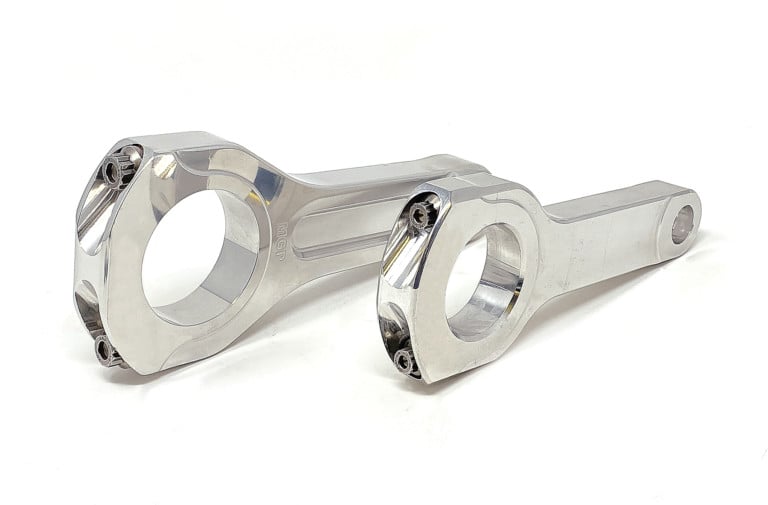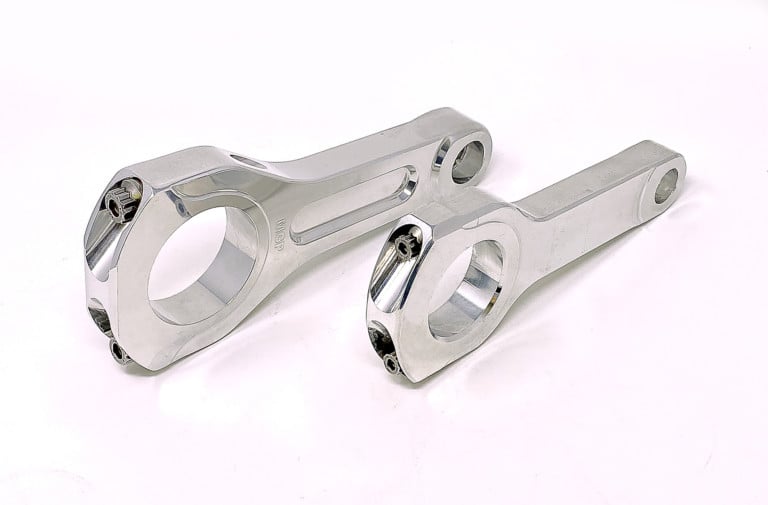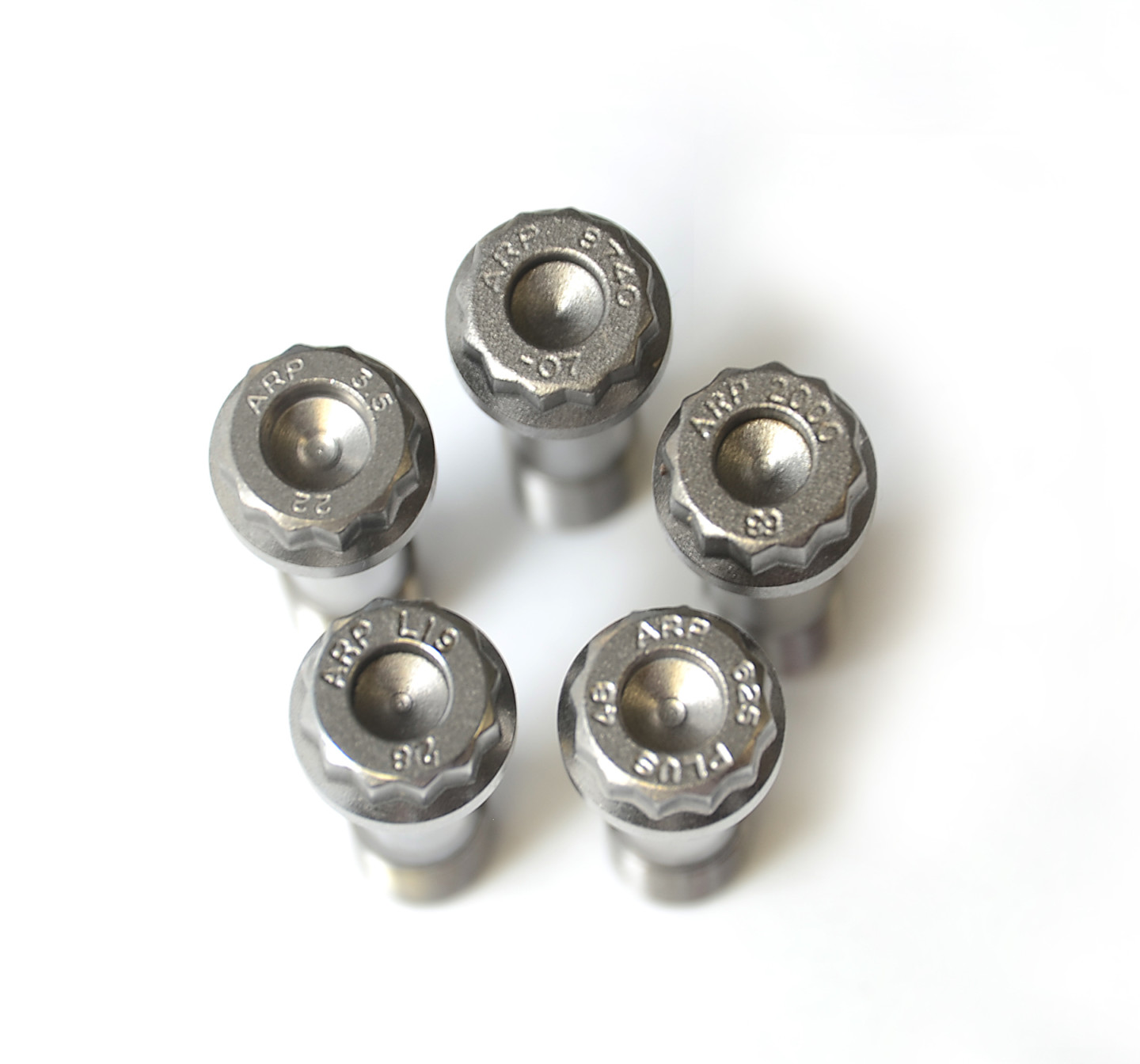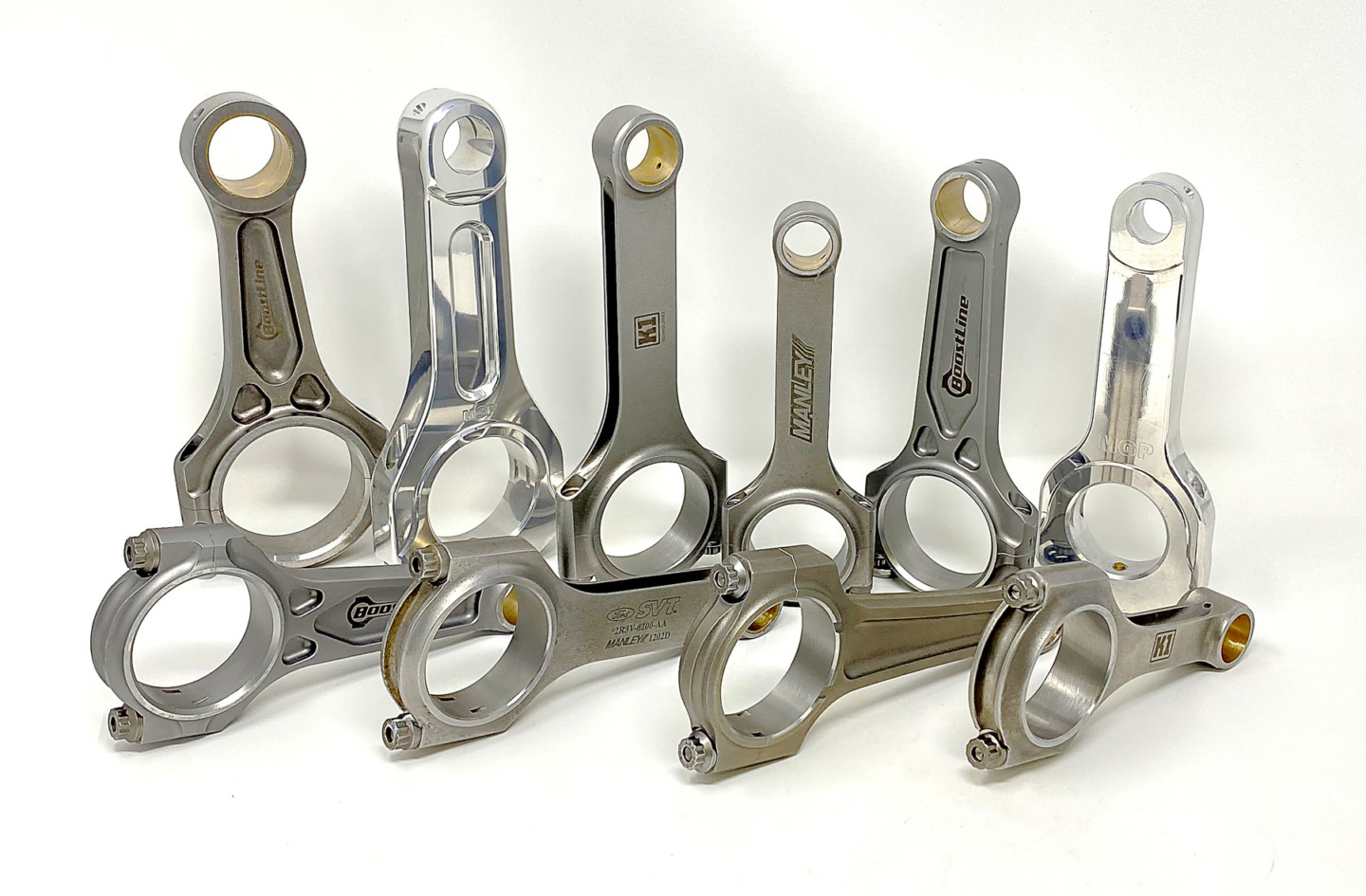Connecting Rod Shapes…And Some New Designs
Editors Note: The following editorial was supplied by Race Winning Brands and its family of connecting rod manufacturers and re-printed here on our digital pages for educational posterity.
We know that connecting rods take a tremendous pounding with each engine revolution —and in today’s high-boost world the stresses are elevated to new heights. Similarly, engine builders strive to minimize weight without sacrificing strength in order to improve efficiency and increase RPM potential, while being mindful of clearances.
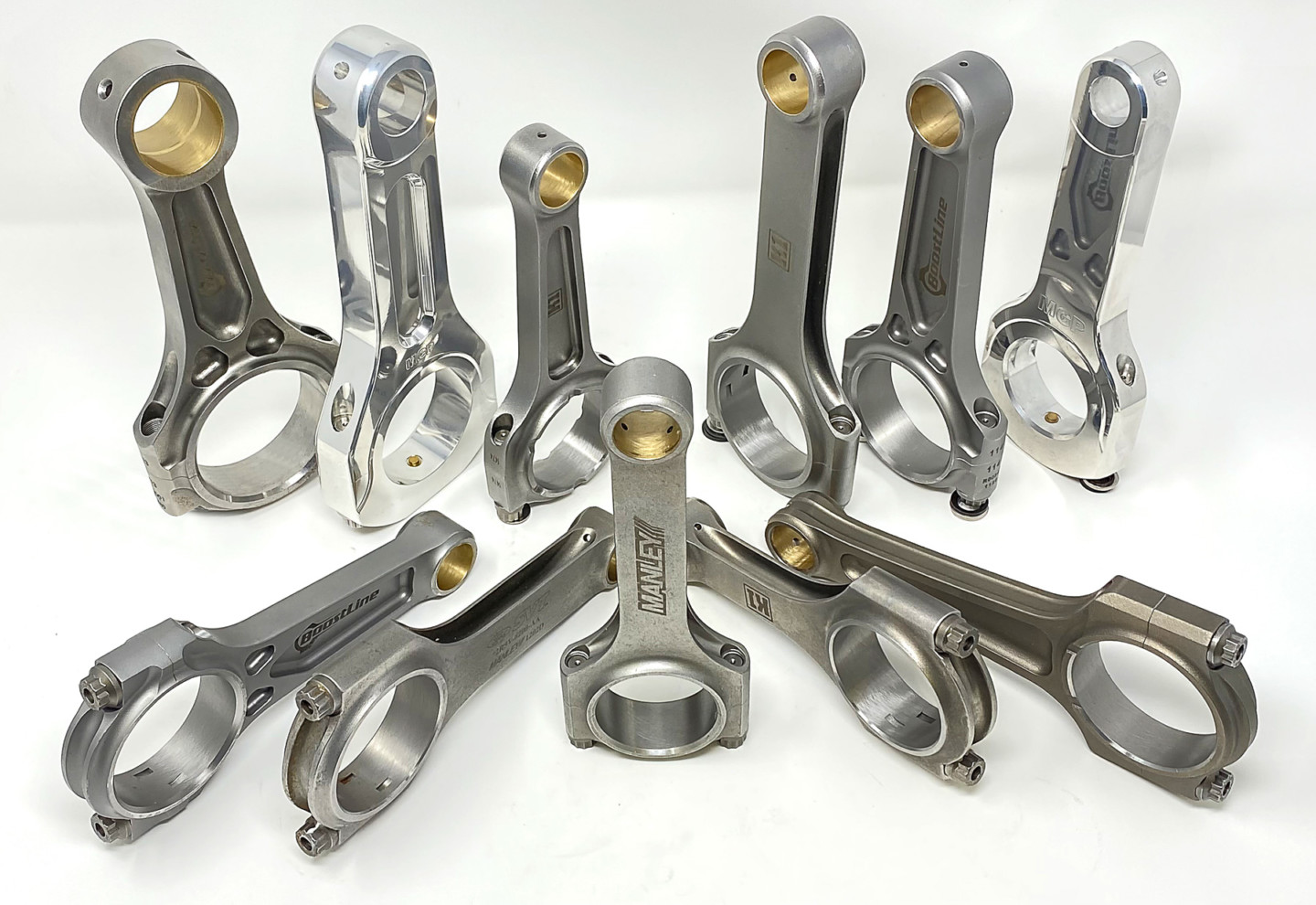
Today’s connecting rod choices range from popular priced forged steel H-beam models, to unique I-beam designs and sophisticated billet aluminum rods.
The industry has responded to these varied challenges by way of design, metallurgical and manufacturing improvements, and for input we turned to the experts at Race Winning Brands, the corporate entity that consists of 10 leading automotive aftermarket manufacturers (along with Powersports-focused firms), with four of them producing connecting rods that range from popular-priced H-beam steel rods for street and E.T. bracket applications to highly sophisticated billet aluminum rods for drag racing’s extreme classes. RWB’s brands include rod-makers BoostLine, K1 Technologies, Manley Performance, and MGP.
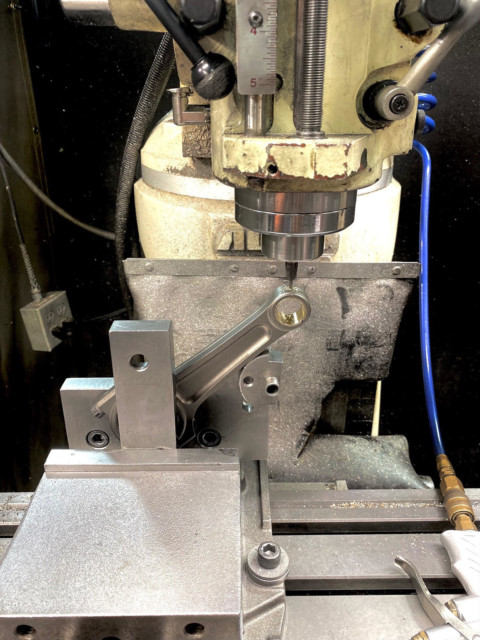
Manley’s unique Tri-Beam rod being machined for pin end oiling holes at 10 and 2 o’clock for better lubrication.
Since 90-plus percent of racing engines are built with steel connecting rods, let’s start there. Industry offerings range from proven H-Beam rods to highly sophisticated variations of the original I-beam design that has been employed in production engines for over a century.
In fact, let’s look at a Ford Model T rod; It’s an I-beam design with a center-to-center length just shy of 7-inches. The babbit material was poured into the big end and shaped (no separate bearings) and the pin end clamped onto the wrist pin —these were the days before “floating” wrist pins became popular. Weight? Not really a factor as the Model’s T’s pistons were cast iron. Compression ratio? Try 4:1. We’ve come a long way, baby!
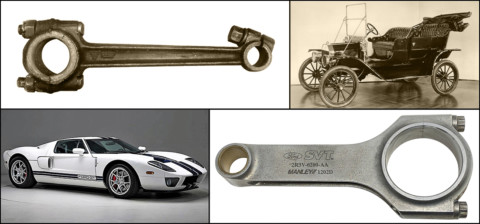
We’ve come a long way from the spindly I-beam rods used in Model Ts to special H-beam rods like those from Manley used as OEM by Ford.
Fast-forward to the 21st century, where Ford’s LeMans-styled GT, with a supercharged 5.4L engine, came from the factory with 4340 H-Beam connecting rods from Manley Performance, as did the later SVT Mustang Cobra.
It’s been said that the H-beam rod design came out of WWII, when aircraft engines infused with nitrous oxide in high-altitude combat experienced failures with I-beam rods. This technology migrated into the automotive aftermarket in the 1960s, with Fred Carrillo a primary mover.
Today’s H-beam rods enjoy advances in metallurgy, manufacturing technology and contemporary rod bolts. All four manufacturers contributing to this article, as well as others, rely on ARP for these critical fasteners. The most popular are entry level 8740 chrome moly (190,000 psi nominal tensile strength), the popular ARP2000 alloy (220,000 psi) and for extreme duty applications the Custom Age 625+ (280,000 psi), as well as L19 (260,000 psi) and 3.5 (280,000 psi).
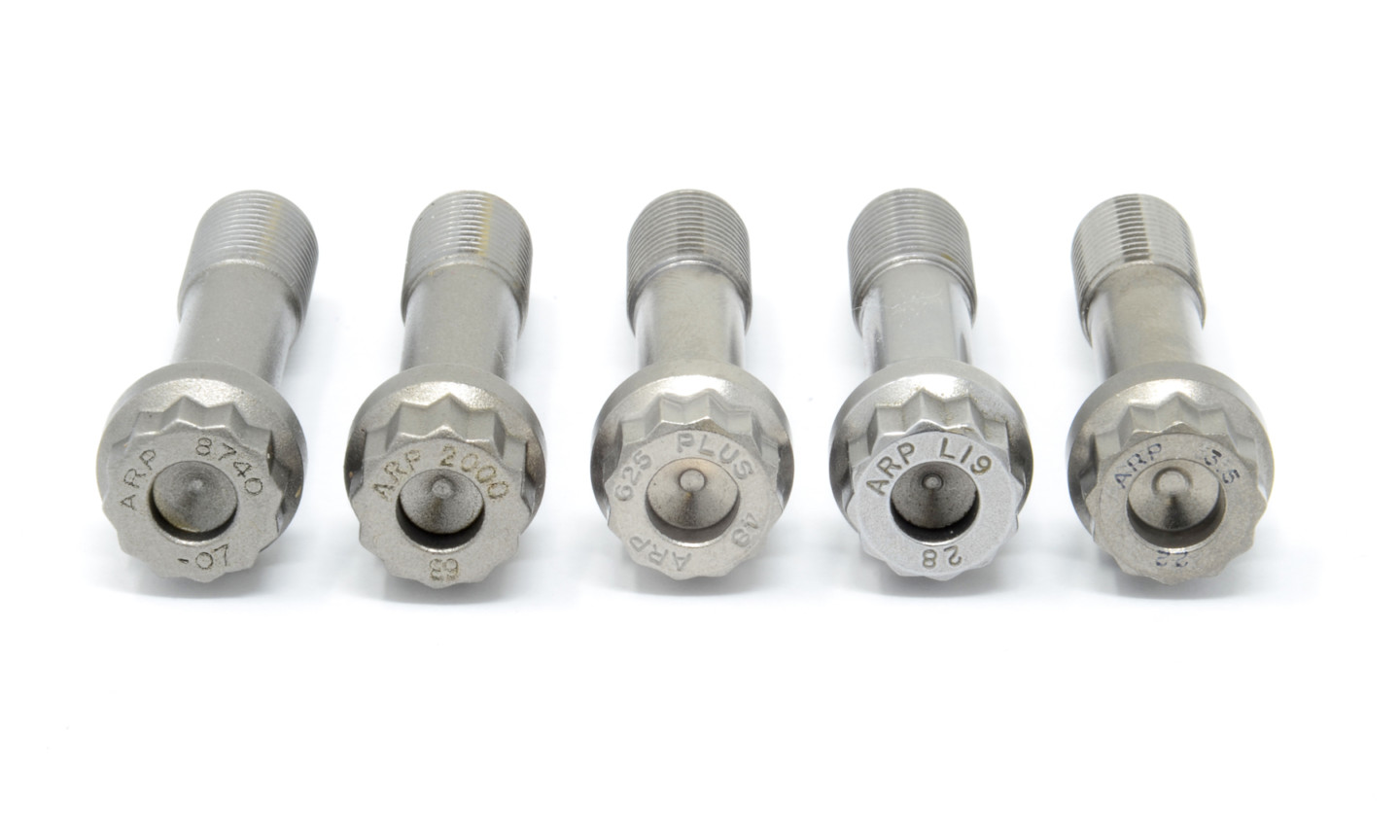
One thing these rods all have in common are ARP rod bolts, which range from 190,000 psi 8740 steel to more sophisticated alloys like L19 that are nominally rated to 280,000 psi tensile strength.
K1 Technologies GM Trey McFarland, a 25-year industry veteran said, “The basic shape of the H-beam rod has not changed in decades, but it’s important to note the features that make them vastly superior to OEM rods. Like others, K1 rods are forged from 4340 steel alloy. But our entry level rod comes with ARP 2000 bolts, which provides the necessary clamping force for the large majority of sportsman-level racers.”
McFarland added, “We have recently developed a rod for the Ford 7.3L Godzilla engine, that makes Ford’s new affordable big-block engine more durable and race-ready.” K-1 Technologies also manufactures I-beam rods for select sport compact applications.
Manley Performance offers a wide spectrum of forged steel connecting rods that include H-Beam, I-beam and a proprietary “Tri-Beam” design that combines attributes of both H-Beam and I-Beam designs.
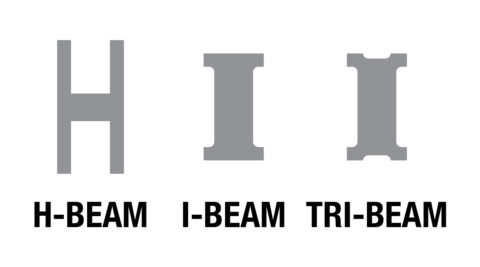
Here’s a cross-sectional drawing of connecting rod beams showing the differences between Manley’s I-Beam, H-Beam and Tri-Beam rods.
One area that Manley has focused on is a series of rods that have been accepted by NHRA and are legal for use in Stock and Super Stock applications. They have “approved” rods for a huge variety of engines that include AMC 390-401, Chevy V-6, small-block, big-block and LS, Olds, Pontiac, Ford and Chrysler applications. Manley is also an NHRA major sponsor and posts contingency awards for rods.
Weight is a key factor and as a rule of thumb I-Beam rods are lighter than H-Beams of a similar size. But for advocates of both designs, Manley offers an “H-Lite” series that’s some 50 grams lighter than a standard H-Beam and “Tour Lite” I-Beams originally developed for oval track competition are lighter yet —getting down to 520 grams for a 5.7-inch small-block Chevy rod.
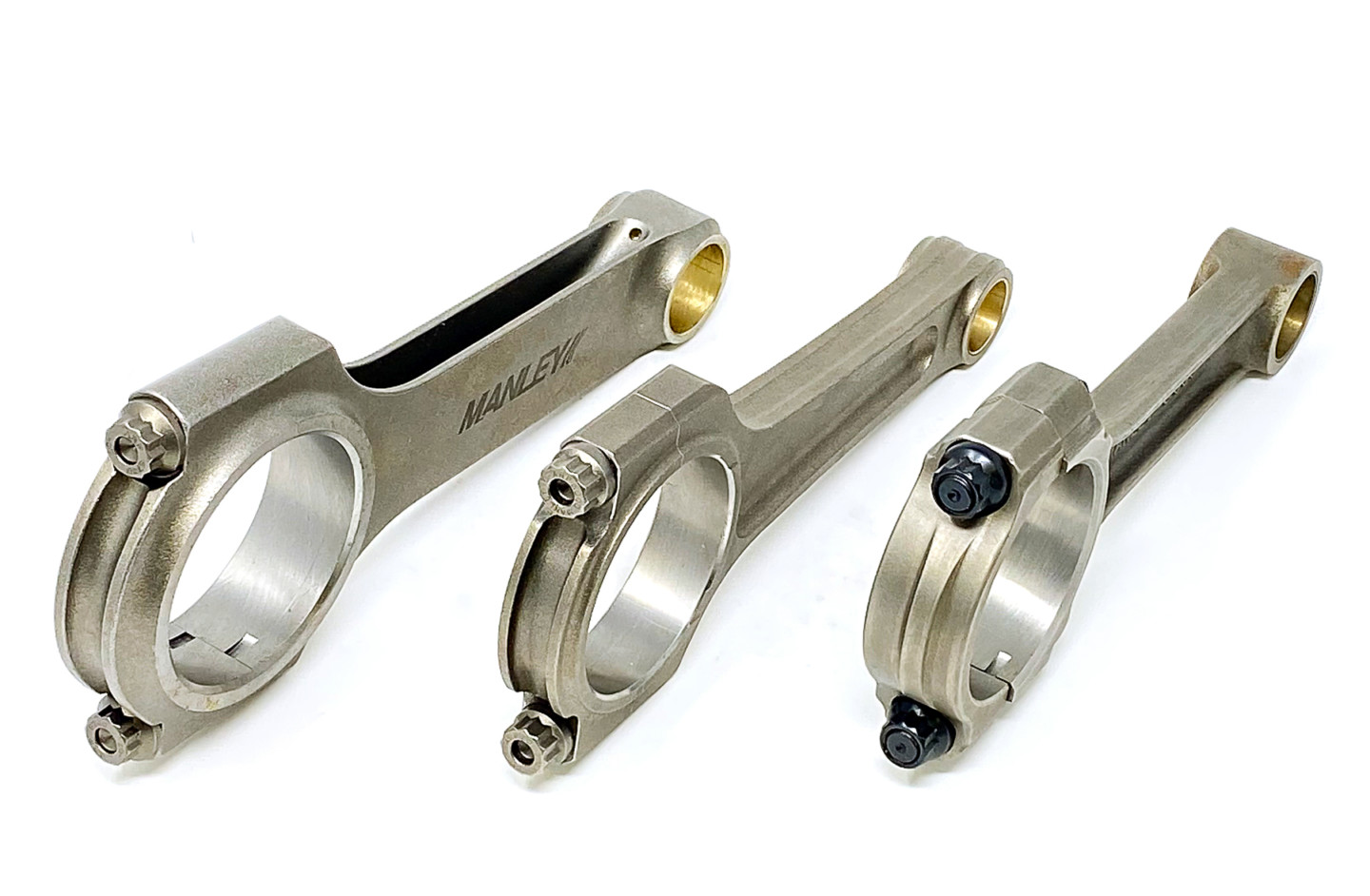
Manley Performance offers both H-Beam and I-Beam rods, as well as its innovative Tri-Beam design for highly-boosted applications.
The Tri-Beam, which is part of Manley’s Turbo Tuff series, was designed specifically for highly boosted sport compact applications. According to Manley GM Michael Tokarchik, “We took our I-Beam rod and added ribs to the pin end, beam and cap which has added strength and helps maintain bore roundness on both ends. We incorporated pin oil holes at 10 and 2 o’clock to improve wrist pin lubrication and undercut the beam to optimize strength-to-weight.”
While most of Manley’s connecting rods are manufactured from 4340 steel alloy, they do offer a premium I-Beam rod made from the highly desirable 300M alloy. This, of course, improves the strength of the rod and allows unnecessary weight to be pared via FEA (Finite Element Analysis). These “Pro Series” rods are available for late Chrysler Hemi, Chevy LS/LT and Modular Ford (including Coyote) engines.
A relative newcomer in the grand scheme of things is BoostLine. While the RWB engineering team behind this unique rod has decades of experience, the design was patented in 2018 and the new brand subsequently launched.
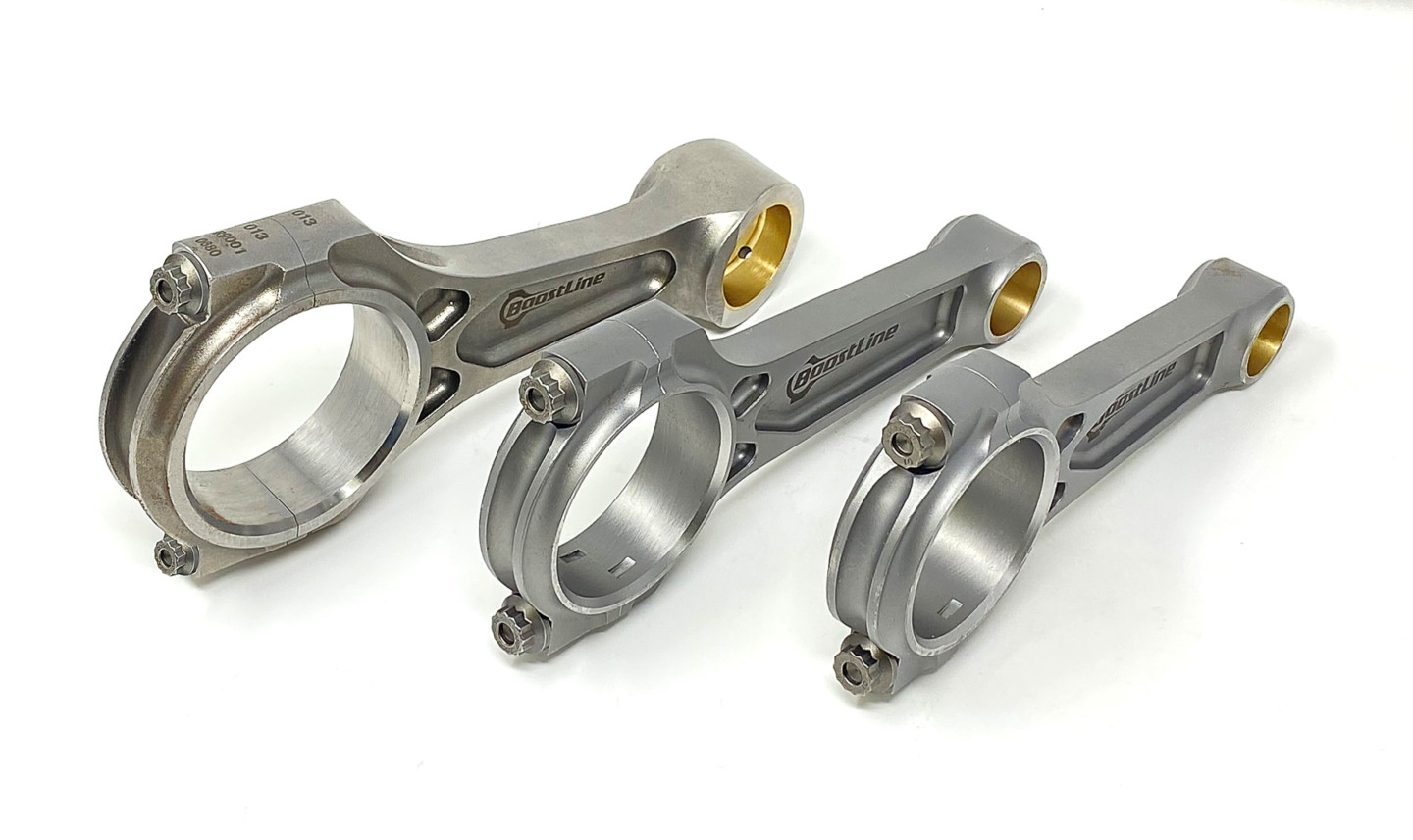
BoostLine’s patented design rods are available for a variety of applications that include diesels —which have been dyno tested to handle over 2,000 HP.
According to BoostLine’s Director of Product Development, Nick DiBlasi, “The unique part of the BoostLine rod is the triangulated wide-beam design along with three machined weight pockets. This provides absolute strength, and allows us to remove unnecessary weight that does not compromise the integrity of the rod.”
Designed specifically to withstand the rigors of highly-boosted engines, the latest iteration of the BoostLine rod is for Cummins and GM DuraMax diesel applications. As part of the rigorous R&D that went into qualifying the product —which included FEA— they were installed in engines and subjected to 2,000-plus pound feet of torque pulls on the dyno.
Are turbos mandatory? BoostLine’s DiBlasi says, “While the rods were designed for heavy-duty forced induction applications they are happily at home with nitrous engines and virtually any marine application. We have customers using them in normally aspirated engines where they just want the longest possible life.”
Sticklers for quality control, Nick added, “All BoostLine connecting rods undergo a rigid 25-point inspection that includes CMM, multiple visual and manual inspections along the way. We pride ourselves in having a product that’s ready for installation.”
Aluminum rods are ideally suited for many drag racing applications as they function as a “shock absorber” of sorts and mitigate the tremendous shock loads that highly boosted (and fuel-burning) engines transmit to the crankshaft. The rods are also relatively light in the grand scheme of things and facilitate high RPM performance.
Precision machined from proprietary aluminum extrusions, MGP rods are available for applications from high-winding small blocks to big-inch Hemis.
MGP, a company known for its jewel-like billet aluminum rods, was also a fairly recent addition to the RWB family. Boasting a design that has been refined over the years (and featuring a special serrated cap), the process begins with proprietary alloy aluminum extrusion that benefits from superior grain alignment and compaction as compared to a plate, and is essentially custom CNC-machined to the customer’s requested specifications and finished to a tolerance of .0002-inches. A close look at the rod confirms the extraordinary level of machining excellence.
Both ARP Custom Age 625+ and L19 fasteners are employed on these rods. Depending on the application, they are offered in three different head sizes (3/8-, 7/16-, and 1/2-inch) and require different torque values to achieve the desired clamping load.
Of course, achieving the proper fastener preload is of paramount importance.
Popular applications for MGP aluminum rods include Pro Mod, Alcohol Funny Car and Dragster, nostalgia fuel, Comp, Pro Stock plus a variety of “Extreme” classes using small- and big-block Chevy engines, as well as 426-type Chryslers.
A common question asked of rod manufacturers and engine builders is at what point should racers consider aluminum. The quick answer is high RPM, normally aspirated drag racing engines and those that are boosted or run nitrous.
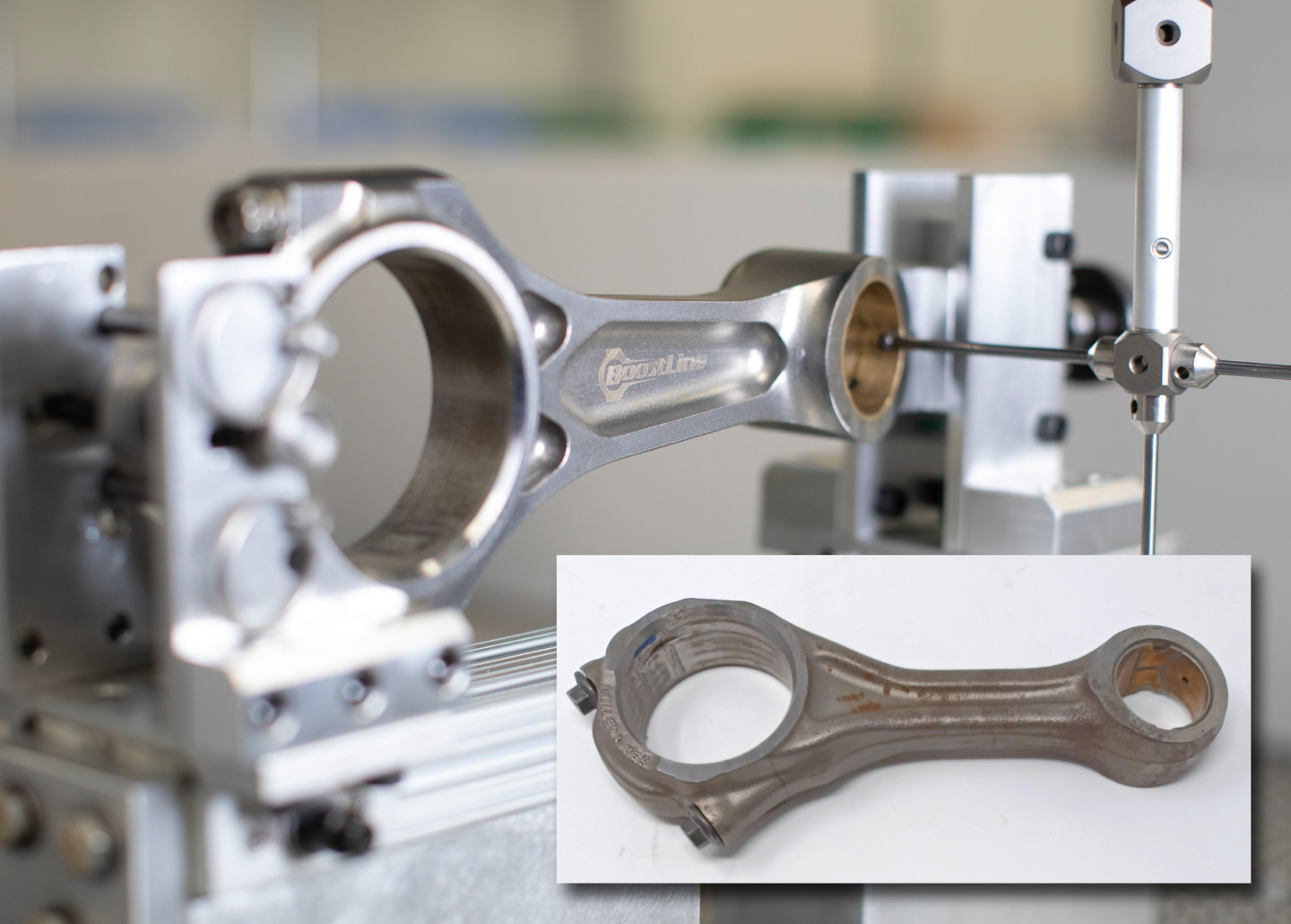
After the raw BoostLine forging (inset) is machined it is subjected to
extensive quality control measures, including CMM inspection of each rod
According to MGP’s Bill Vinton, “Elevated cylinder pressures make the aluminum rod a better candidate versus steel, as the aluminum rod can dampen loads and is much more forgiving on the bearings.”
What’s the typical service life of an aluminum rod? According to Vinton, “It’s very difficult to put a number to this, as there are so many variables and engine combinations that yield different results, but a typical Comp Eliminator racer probably changes out rods in a normally aspirated small-block Chevy between 60-80 passes. A Pro Mod guy is likely in the 30-50 pass range, while bracket racers can easily rack up 150 passes before changing rods. It all boils down to RPM, piston weight, stroke and combustion pressures. How much stress does the rod experience?”
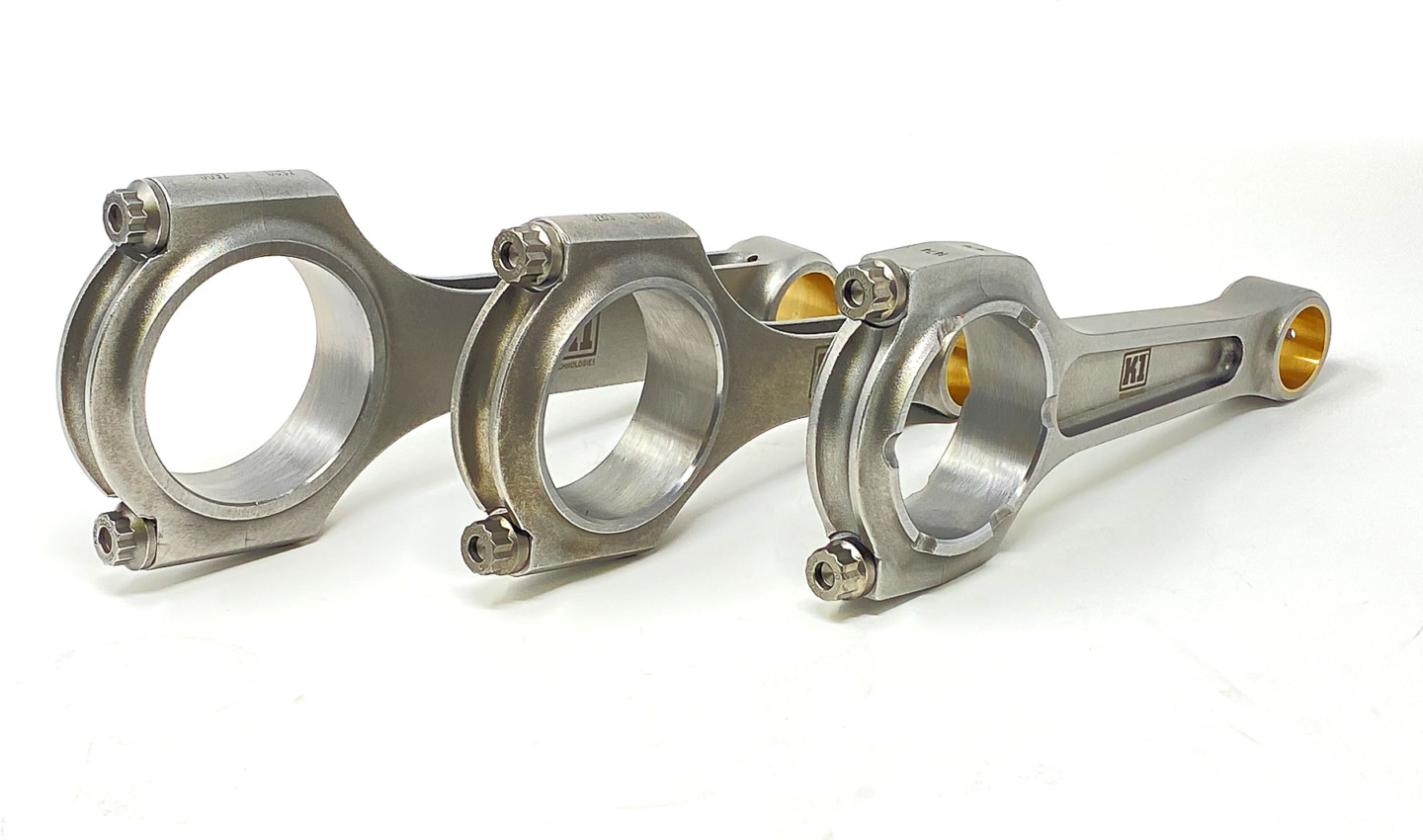
K1 Technologies offers a wide range of connecting rods for popular domestic and Sport Compact applications. They all feature upgraded ARP2000 rod bolts that are rated at 220,000 psi.
This, of course, brings up the matter of what to look for during regular maintenance. Vinton says, “It’s important to monitor the rod bolts for stretching. We consider that a bolt has yielded if the free length has increased by .0005-inches over the installed length. It’s also important to monitor the housing bore, pin bore, and center-to-center length. This movement of material will provide a good indicator of how much the rods have been stressed during service. Keeping good notes is imperative.”
So there you have it…an overview of aftermarket connecting rods that range from proven value H-Beam and I-Beam models for a wide variety of applications to some new designs rods for drag racing’s elite classes. Comprehensive technical assistance is available from these manufacturers. Take advantage of it!


